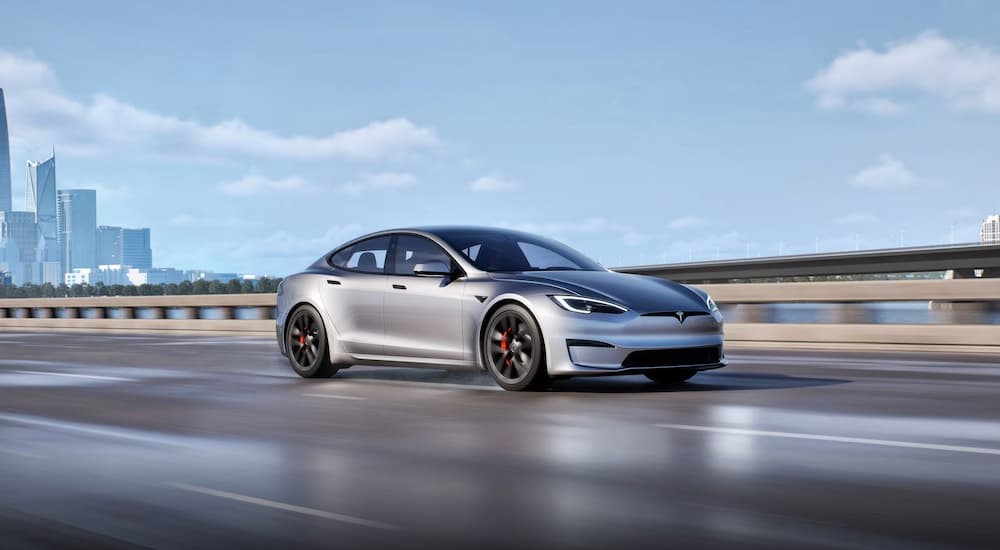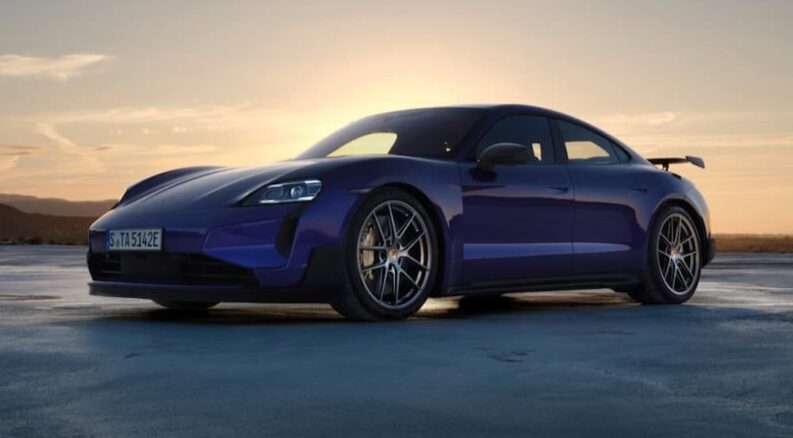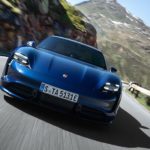Admittedly, this is not a question that keeps me up at night, but it’s a point of interest for those who are into high-performance electric sedans. There’s no denying that two of the leaders in this market are the newly updated Taycan Turbo GT and the Tesla Model S Plaid, both of which are high-performance variants of these already impressive vehicles. Obviously, either one of these is going to push your butt back in the seat and leave you with a smile on your face that refuses to leave, but which one actually delivers more speed and greater performance?
There are different ways to approach this question, but one of the simplest, since it’s a quantitative point that we can easily compare and judge, is performance on race tracks. Among legendary tracks in the world, few can match the Nürburgring in Germany, which is well known for grueling conditions that put any vehicle to the test. In particular, with its long straightaways and nearly 13-mile overall length, this track is known to be a tremendous challenge for the batteries in electric vehicles (EVs), making it the perfect stage for an epic automotive showdown.

The Green Hell
To understand what we’re looking at, let’s check out what the Nürburgring is and why it’s so important for auto enthusiasts. The Nürburgring is a race track in Germany featuring several different courses. Originally, there were four different configurations, but the North Loop is the most famous. Nicknamed “The Green Hell” by driver Jackie Stewart, this North Loop stretches nearly 13 miles and includes more than 1,000 feet of elevation change from its highest to lowest points. It’s an intense racetrack that tests drivers and vehicles alike, making it the perfect place to put a high-performance EV through its paces.
That’s precisely what companies like Porsche do. They take a vehicle to the Nürburgring and see how hard they can push it. I should mention that these aren’t typically the stock versions of their vehicles. They are usually modified for increased performance or safety. For example, Porsche installed racing bucket seats and a roll cage in the Taycan Turbo GT they used on the track.
How did this new model perform? Really well. It posted a lap time on the modern North Loop of 7:07.55. Without any other context, that seems pretty good for a 13-mile stretch of challenging track. To put it into context, however, this time is about 26 seconds faster than the current Taycan Turbo S posted on the Nürburgring. This new time used the redesigned 2025 Taycan and the new Turbo GT model as the ultimate expression of all-electric Porsche performance, so it’s no surprise it was better than their previous version. Still, that’s not a small difference. In motorsports, even a fraction of a second can mean huge bragging rights.
Speaking of bragging rights, Porsche isn’t the only brand testing their high-end EVs on the Nürburgring. Tesla has also posted lap times on this same track. The Tesla Model S Plaid is the high-performance version of Tesla’s popular sedan, and the closest thing we have to a Tesla sports car since the Roadster continues to languish in development. In 2023, the Model S Plaid posted an impressive lap time of 7:25.231 on the Nürburgring North Loop, setting a new record for electric production cars. However, that’s more than 17 seconds slower than what the Taycan Turbo GT posted this year.
What’s even more remarkable is that the Porsche’s lap time on the Nürburgring is less than two seconds behind the time posted by the Rimac Nevera. If you’ve never heard of the Nevera, that probably means you’re not in the market for an all-electric hypercar that puts out almost 2,000 hp and rolls out of the factory with a starting price north of $2 million. In other words, Porsche’s Taycan GT Turbo nearly posted a lap time that matched a $2 million hypercar. That’s impressive on a level that few other vehicles can come close to.
Second Lap: Taycan Turbo GT Sets Record at Laguna Seca
Of course, the Nürburgring isn’t the only racetrack or test track out there. There are plenty more, and Porsche has been happy to post impressive numbers on them, too. Following their triumph at the Nürburgring, Porsche took the new 2025 Taycan to Laguna Seca in Monterey, California. Laguna Seca isn’t nearly as punishing a roadway as the Nürburgring, measuring just over two miles in length and with only 180 feet in elevation change. However, it’s still an excellent place to see what a performance EV can do.
The 2025 Porsche Taycan Turbo GT posted a new production EV lap record of 1:27.87. This comfortably beats the old lap record time of 1:30.3 set by a Tesla Model S Plaid a few years ago. What’s particularly noteworthy here is that this is a production vehicle, which means it has to be an unmodified model. Other EVs have posted faster laps, but they’ve all been modified from their stock version in some way. This new record of 1:27.87 was achieved using the same Taycan Turbo GT that you can buy and proudly drive around town.
What’s New With the 2025 Porsche Taycan?
The Taycan gets a major overhaul and update for 2025, delivering more power, greater range, quicker acceleration, and faster charging potential. Four powertrain configurations are available, including both rear-wheel drive (RWD) and all-wheel drive (AWD) options, along with numerous models designed to deliver different kinds of driving experiences. You have the standard entry-level model that’s perfect for daily driving, the Taycan Cross Turismo with an available off-road package for a more adventurous lifestyle, and the new Turbo GT for high-end performance.
Speaking of performance, RWD models can now go from 0 to 60 mph in 4.5 seconds (0.6 seconds faster than last year’s model), while those with AWD can hit 60 mph in a mere 2.3 seconds (0.3 seconds faster than before). A new Push-to-Pass system lets drivers press a button and gain up to 70 kW of additional power for up to 10 seconds, ensuring they have a great time getting onto a freeway or passing an old lady in her Tesla. Porsche has also boosted recharge capabilities to utilize up to 320 kW in ideal conditions at fast charging stations, going from 10% to 80% charge in as little as 18 minutes. They haven’t specified power output yet, but rumors are that the Turbo GT tops out at just over 1,000 hp using launch control.
Performance EVs Keep Getting Better
While there will always be models like the Rimac Nevera, that kind of vehicle is outside the realm of possibility for most of us. Chances are we’ll never even see one on the road. On the other hand, something like the Porsche Taycan isn’t impossible to get. It’s still a high-end luxurious model, far from something like the Chevy Bolt EV, but far closer to the Bolt than the Nevera when it comes to attainability, not to mention everyday practicality. Vehicles like the Tesla Model S Plaid and Porsche Taycan Turbo GT are pushing the envelope to offer more power and performance, which means improved engineering becomes more accessible and EVs get better overall with each passing year. It’s fun to see these electrified beasts tear up the track and compete to be the top dog.





